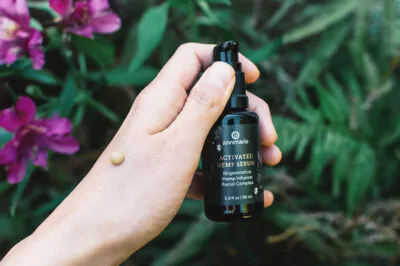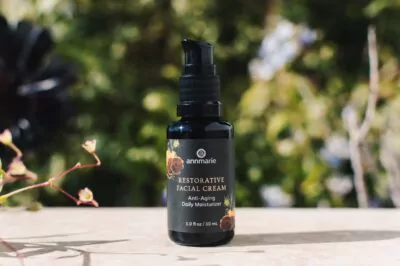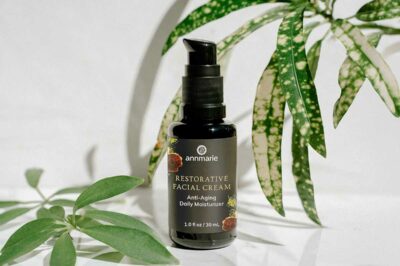“How often should I exfoliate?”
We get this question all the time and after years of answering it, we can tell you that everyone’s exfoliation schedule is a little bit different.
The ASC team is a good example! My office mate’s skin is oily and non-sensitive so she works with a gentle chemical product daily and a mechanical scrub every other day at least. Another workmate has combination skin bordering on dry depending on the weather so she uses a coarse mechanical exfoliator twice a week and then if she’s feeling flaky, she’ll use a mellow exfoliant for a third go around.
As you can see, exfoliating, like most skin care routines, isn’t an exact schedule-able science and there are a lot of different factors at play when it comes to scrubbing your face.
What is exfoliation? Do we need it?
We talked more in depth about what exfoliation is here but basically, it’s adding an extra cleansing step that helps to scrub away buildup and combat the signs of aging.
Exfoliating is a crucial step in any complete beauty regimen. Removing the build up allows the products you use to deeply nourish your skin, promotes an even skin tone, and helps expose the glowing skin you know is there.
We’re here to work within the boundaries of the skin, not force it to adhere to our strict schedule so you definitely want to check in with your skin before you exfoliate. To choose the best exfoliator, you want to take a look at what works best in your routine and what your skin needs.
What to use?
This section is fraught with the questions you want to ask yourself to begin narrowing down the type of product you want to use.
Do you like a chemical peel that you can put on and rinse off a few minutes later? What kind of acids feel the best for you and how high is the concentration? What about using a daily toner that has glycolic and salicylic acids in it, do you need to add an extra exfoliating element? If you use alpha-hydroxy acids try starting with once a week and see how you feel. If you use a gentle peel and you get to the middle of the week and you’re feeling tight, seeing buildup, or your products aren’t soaking in the way you’d like them to, think about doing it a second time. Maybe even consider a manual scrub for your midweek treatment.
Maybe you find out that you prefer the mindful circular movement of a manual peel. How about a coarse product that leaves you feeling super clean once weekly or do you want more frequent scrubbing with less intensity? Try adding a something like our Kaolin Micro Exfoliant twice a week to start and then increasing in frequency until you’re comfortable with your routine.
We say this in every article about skin care products but we really, really mean it—check your ingredients. Exfoliating leaves your skin fresh and bare so you want to make sure that what you’re using to scrub and what you’re putting on afterwards is healthy and in line with your skin care goals. As a general rule, you’ll want to see something like salacious earth or an herbal formula. Anything with microbeads is going to be laden with chemicals and it’s been scientifically shown that the microbeads in these products are causing damage to the environment.
What does your skin need?
I hope that you have a good idea of the type of product and potentially the frequency that you’re wanting to exfoliate because now it’s time to compare what you’d like to use with what you actually need. We make suggestions based on skin type, which can be pretty general, so when you’re enroute to finding the perfect exfoliating routine, take it slow and watch your skin for signs of irritation.
Dry skin
Dry skin needs exfoliators to remove buildup, but it doesn’t need it very often. We suggest starting with a once a week treatment and then moving up to twice a week if you’re feeling comfortable with that. Exfoliating too often can cause some extra sensitivity so it’s important to pay close attention to what you’re experiencing.
Dry skin can tend to be a bit more delicate so people that begin to work with an exfoliator on a regular basis may find that they’re shedding quite a bit in the beginning — it’s normal and healthy. If you’re not seeing signs of over-exfoliating, keep with your routine and your skin will be revived in no time!
Dry skin types often work better with manual scrubs because it’s easier to control the intensity. We suggest starting with something gentle, like ground steel cut oats, and if you’re comfortable with it trying out something coarser like a salacious earth scrub.
Oily skin
As our staff esthetician can tell you, oily skin can handle it!
People with oily skin do well to work up to using almost daily exfoliators. Why? Because our skin is producing lots of oil that can trap dirt and grime in our pores and scrubs are an awesome way to clear out the gunk and unclog those pores.
There is one caveat here. Exfoliating with a facial scrub on active oil-burdened skin can spread pore-clogging bacteria. So for people that are working on getting a clean complexion, we suggest a chemical exfoliant like a toner with salicylic acid in it. A manual scrub that doubles as a facial mask that pulls out impurities and balances oils is a great option when there aren’t active clogged pores present.
Normal and combination skin
For once, the ‘normal’ category has the least obvious approach. Exfoliating increases your skin’s exposure to the world, which can be good or bad for normal skin so this is going to be more of a trial and error process for you.
Some people with thick, normal skin use a light product every day or every other day but people that are a bit more sensitive can stick to twice a week or so. If you’re not sure where you fall on this scale, start slow and work up.
What might be nice for you to try is a light chemical peel with alpha-hydroxy acids once a week and then a coarse scrub midweek, to begin with and see what looks and feels better!
Sensitive Skin
Sensitive skin can be another tricky type to exfoliate because some people with sensitive skin can actually become less sensitive by exfoliating regularly and other people aren’t so lucky.
Since having sensitive skin isn’t related to having a specific type of oil production, you’ll want to read about the best way to exfoliate your skin type and then scale it back a little bit. So if you have sensitive but oily skin, daily exfoliators might be too harsh, try working with a natural toner with salicylic acid in it or a gentle scrub every other day.
If your skin is dry and sensitive, you might need to stick to once a week or even every 10 days! Some people with sensitive dry skin like using a light manual exfoliant and then following up with a nourishing mask like the Coconut Honey Mask.









What would a salacious earth scrub be? I’m not sure what that means.
It would be the same as diatomaceous earth, for example, which is in our new Kaolin Micro Exfoliant. 🙂
Haven’t you always said that salicylic acid is bad for skin? And do you even sell chemical exfoliants? I feel like you’re contradicting yourselves and telling us to use products you don’t even sell. I’m really confused.
Hi Lucy! It certainly depends on the product & its ingredient list. Salicylic acid is not always a bad thing! This article just gives some general insight & talks about many different options for exfoliation. While we do not sell chemically exfoliating products, there are some quality, natural ones out there on the market. Thank you for your feedback 🙂